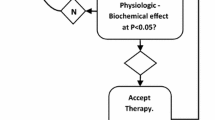Abstract
Introduction
The use of intracranial pressure (ICP) monitors is nearly synonymous with Neurocritical Care. Recent studies in nursing literature have report high levels of practice variance associated with ICP monitoring and treatment. There are no recent practice surveys to describe how critical care physicians and nurses who are familiar with ICP management provide care to their patients.
Methods
A short survey was developed and disseminated electronically to the members of the Neurocritical Care Society.
Results
The summary from 241 professionals provides evidence that there is significant practice variation associated with ICP monitoring and management.
Conclusion
The results highlight the need to develop standardized approaches to measuring, monitoring, recording, and treating ICP.

Similar content being viewed by others
References
March K. Intracranial pressure monitoring and assessing intracranial compliance in brain injury. Crit Care Nurs Clin North Am. 2000;12(4):429–36.
Greenberg MS. Handbook of neurosurgery. 5th ed. Lakeland, FL: Thieme; 2001.
Greenberg MS, Arredondo N. Handbook of neurosurgery. 6th ed. Lakeland, FL: Greenberg Graphics; Thieme Medical Publishers; 2006.
Levin HS, Saydjari C, Eisenberg HM, et al. Vegetative state after closed-head injury. A traumatic coma data bank report. Arch Neurol. 1991;48(6):580–5.
Marmarou A. Increased intracranial pressure in head injury and influence of blood volume. J Neurotrauma. 1992;9(Suppl 1):S327–32.
Abou-Assi S, Vlahcevic ZR. Hepatic encephalopathy. Metabolic consequence of cirrhosis often is reversible. Postgrad Med. 2001;109(2):52–65.
Kiening KL, Unterberg AW, Bardt TF, Schneider GH, Lanksch WR. Monitoring of cerebral oxygenation in patients with severe head injuries: brain tissue PO2 versus jugular vein oxygen saturation. J Neurosurg. 1996;85(5):751–7.
Rangel-Castilla L, Gopinath S, Robertson CS. Management of intracranial hypertension. Neurol Clin. 2008;26(2):521–41.
Olson DM, Lewis LL, Bader MK, et al. Significant practice pattern variations associated with intracranial pressure monitoring. J Neurosci Nurs. 2013;45(4):186–93.
Sinkowitz-Cochran RL. Survey design: to ask or not to ask? That is the question. Clin Infect Dis. 2013;56(8):1159–64.
Allan D. Intracranial pressure monitoring: a study of nursing practice. J Adv Nurs. 1989;14(2):127–31.
Bennett TD, Riva-Cambrin J, Keenan HT, Korgenski EK, Bratton SL. Variation in intracranial pressure monitoring and outcomes in pediatric traumatic brain injury. Arch Pediatr Adolesc Med. 2012;166(7):641–7.
Rehman T, Rehman AU, Rehman A, et al. A US-based survey on ventriculostomy practices. Clin Neurol Neurosurg. 2012;114(6):651–4.
Padayachy LC, Figaji AA, Bullock MR. Intracranial pressure monitoring for traumatic brain injury in the modern era. Child’s Nerv Syst. 2010;26(4):441–52.
Ragauskas A, Matijosaitis V, Zakelis R, et al. Clinical assessment of noninvasive intracranial pressure absolute value measurement method. Neurology. 2012;78(21):1684–91.
Shaw M, Piper I, Chambers I, et al. The brain monitoring with information technology (BrainIT) collaborative network: data validation results. Acta Neurochir. 2008;102:217–21.
Marmarou A, Anderson RL, Ward JD, et al. NINDS traumatic coma data bank: intracranial pressure monitoring methodology. J Neurosurg. 1992;75(November):S21–7.
Chesnut RM, Temkin N, Carney N, et al. A trial of intracranial-pressure monitoring in traumatic brain injury. New Eng J Med. 2012;367(26):2471–81.
Vaismoradi M, Salsali M, Ahmadi F. Nurses’ experiences of uncertainty in clinical practice: a descriptive study. J Adv Nurs. 2011;67(5):991–9.
Watkins P. Uncertainty in clinical practice. Clin Med. 2005;5(3):197–8.
Logan RL, Scott PJ. Uncertainty in clinical practice: implications for quality and costs of health care. Lancet. 1996;347(9001):595–8.
AANN. AANN Core curriculum for neuroscience nursing. 4th ed. St. Louis, Mo.: Saunders; 2004.
March K, Madden L. Intracranial pressure management. In: Littlejohns LR, Bader MK, editors. AACN-AANN protocols for practice: monitoring technologies in critically ill neuroscience patients. Sudbury, MA: Jones and Bartlett Publishers; 2009.
Miriovsky BJ, Shulman LN, Abernethy AP. Importance of health information technology, electronic health records, and continuously aggregating data to comparative effectiveness research and learning health care. J Clin Oncol. 2012;30(34):4243–8.
Hunter KM. Electronic health records. In: Englebardt SP, Nelson R, editors. Health care informatics an interdisciplinary approach. St. Louis: Mosby; 2002. p. 209–30.
Wells DL, Swanson JM, Wood GC, et al. The relationship between serum sodium and intracranial pressure when using hypertonic saline to target mild hypernatremia in patients with head trauma. Crit Care. 2012;16(5):R193.
Kim GS, Amato A, James ML, et al. Continuous and intermittent CSF diversion after subarachnoid hemorrhage: a pilot study. Neurocrit Care. 2011;14(1):68–72.
Nishijima DK, Shahlaie K, Echeverri A, Holmes JF. A clinical decision rule to predict adult patients with traumatic intracranial haemorrhage who do not require intensive care unit admission. Injury. 2012;43(11):1827–32.
Low D, Kuralmani V, Ng SK, Lee KK, Ng I, Ang BT. Prediction of outcome utilizing both physiological and biochemical parameters in severe head injury. J Neurotrauma. 2009;26(8):1177–82.
Parashos P, Morgan MV, Messer HH. Response rate and nonresponse bias in a questionnaire survey of dentists. Commun Dent Oral Epidemiol. 2005;33(1):9–16.
Dykema J, Stevenson J, Day B, Sellers SL, Bonham VL. Effects of incentives and prenotification on response rates and costs in a national web survey of physicians. Eval Health Prof. 2011;34(4):434–47.
Author information
Authors and Affiliations
Corresponding author
Electronic supplementary material
Below is the link to the electronic supplementary material.
Rights and permissions
About this article
Cite this article
Olson, D.M., Batjer, H.H., Abdulkadir, K. et al. Measuring and Monitoring ICP in Neurocritical Care: Results from a National Practice Survey. Neurocrit Care 20, 15–20 (2014). https://doi.org/10.1007/s12028-013-9847-9
Published:
Issue Date:
DOI: https://doi.org/10.1007/s12028-013-9847-9




